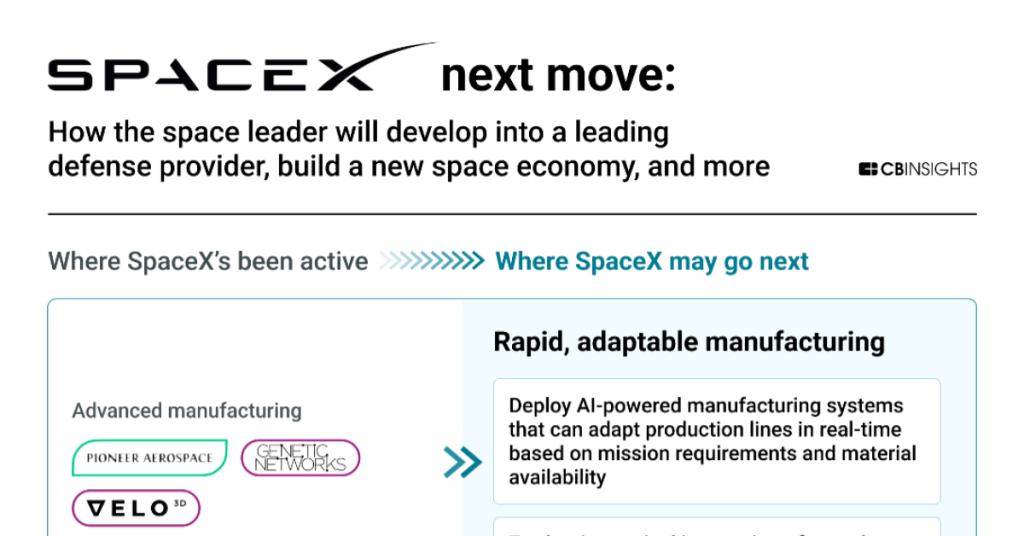Since its 2002 launch, SpaceX has evolved beyond rocket manufacturing to become the driving force of a new space economy.
Last year, the company completed 134 launches at costs 3X lower than its nearest competitors due to vertical integration, reusable rockets, and economies of scale. These structural advantages underpin a broader space infrastructure strategy.
Its Starlink constellation now operates 65% of all satellites in orbit, with connectivity embedded directly into consumer devices, aviation fleets, and international telecommunication providers. This creates a powerful lock-in that makes it more difficult for competitors to capture market share.
Beyond commercial markets, SpaceX is emerging as a critical defense contractor, combining launches with AI and autonomous systems. The company is positioning itself as essential infrastructure for US national security, with $3B in projected defense contracts by 2025.
Using CB Insights data, we analyzed SpaceX’s acquisitions, investments, and partnerships since Q4’23 to identify the key areas driving its next chapter of growth.
Here are 3 key takeaways from our analysis:


